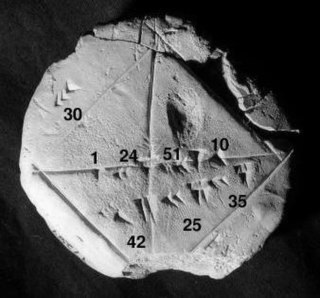Integration may refer to:
Integration may refer to:

In mathematics, an integral is the continuous analog of a sum, which is used to calculate areas, volumes, and their generalizations. Integration, the process of computing an integral, is one of the two fundamental operations of calculus, the other being differentiation. Integration was initially used to solve problems in mathematics and physics, such as finding the area under a curve, or determining displacement from velocity. Usage of integration expanded to a wide variety of scientific fields thereafter.

Numerical analysis is the study of algorithms that use numerical approximation for the problems of mathematical analysis. It is the study of numerical methods that attempt to find approximate solutions of problems rather than the exact ones. Numerical analysis finds application in all fields of engineering and the physical sciences, and in the 21st century also the life and social sciences like economics, medicine, business and even the arts. Current growth in computing power has enabled the use of more complex numerical analysis, providing detailed and realistic mathematical models in science and engineering. Examples of numerical analysis include: ordinary differential equations as found in celestial mechanics, numerical linear algebra in data analysis, and stochastic differential equations and Markov chains for simulating living cells in medicine and biology.
Quadrature may refer to:

Computational physics is the study and implementation of numerical analysis to solve problems in physics. Historically, computational physics was the first application of modern computers in science, and is now a subset of computational science. It is sometimes regarded as a subdiscipline of theoretical physics, but others consider it an intermediate branch between theoretical and experimental physics — an area of study which supplements both theory and experiment.

In analysis, numerical integration comprises a broad family of algorithms for calculating the numerical value of a definite integral. The term numerical quadrature is more or less a synonym for "numerical integration", especially as applied to one-dimensional integrals. Some authors refer to numerical integration over more than one dimension as cubature; others take "quadrature" to include higher-dimensional integration.

Numerical methods for ordinary differential equations are methods used to find numerical approximations to the solutions of ordinary differential equations (ODEs). Their use is also known as "numerical integration", although this term can also refer to the computation of integrals.
In symbolic computation, the Risch algorithm is a method of indefinite integration used in some computer algebra systems to find antiderivatives. It is named after the American mathematician Robert Henry Risch, a specialist in computer algebra who developed it in 1968.

Theoretical computer science is a subfield of computer science and mathematics that focuses on the abstract and mathematical foundations of computation.
In mathematics, a linear differential equation is a differential equation that is defined by a linear polynomial in the unknown function and its derivatives, that is an equation of the form where a0(x), ..., an(x) and b(x) are arbitrary differentiable functions that do not need to be linear, and y′, ..., y(n) are the successive derivatives of an unknown function y of the variable x.
In mathematics, an expression or equation is in closed form if it is formed with constants, variables and a finite set of basic functions connected by arithmetic operations and function composition. Commonly, the allowed functions are nth root, exponential function, logarithm, and trigonometric functions. However, the set of basic functions depends on the context.
Computational science, also known as scientific computing, technical computing or scientific computation (SC), is a division of science, and more specifically the Computer Sciences, which uses advanced computing capabilities to understand and solve complex physical problems. While this discussion typically extenuates into Visual Computation, this research field of study will typically include the following research categorizations.
In mathematics, a nonelementary antiderivative of a given elementary function is an antiderivative that is, itself, not an elementary function. A theorem by Liouville in 1835 provided the first proof that nonelementary antiderivatives exist. This theorem also provides a basis for the Risch algorithm for determining which elementary functions have elementary antiderivatives.
Numerical methods for partial differential equations is the branch of numerical analysis that studies the numerical solution of partial differential equations (PDEs).
In calculus, symbolic integration is the problem of finding a formula for the antiderivative, or indefinite integral, of a given function f(x), i.e. to find a formula for a differentiable function F(x) such that
The boundary element method (BEM) is a numerical computational method of solving linear partial differential equations which have been formulated as integral equations, including fluid mechanics, acoustics, electromagnetics, fracture mechanics, and contact mechanics.

Computational electromagnetics (CEM), computational electrodynamics or electromagnetic modeling is the process of modeling the interaction of electromagnetic fields with physical objects and the environment using computers.
Computational mechanics is the discipline concerned with the use of computational methods to study phenomena governed by the principles of mechanics. Before the emergence of computational science as a "third way" besides theoretical and experimental sciences, computational mechanics was widely considered to be a sub-discipline of applied mechanics. It is now considered to be a sub-discipline within computational science.
Electromagnetic field solvers are specialized programs that solve Maxwell's equations directly. They form a part of the field of electronic design automation, or EDA, and are commonly used in the design of integrated circuits and printed circuit boards. They are used when a solution from first principles or the highest accuracy is required.
The following is a timeline of scientific computing, also known as computational science.
Most of the terms listed in Wikipedia glossaries are already defined and explained within Wikipedia itself. However, glossaries like this one are useful for looking up, comparing and reviewing large numbers of terms together. You can help enhance this page by adding new terms or writing definitions for existing ones.